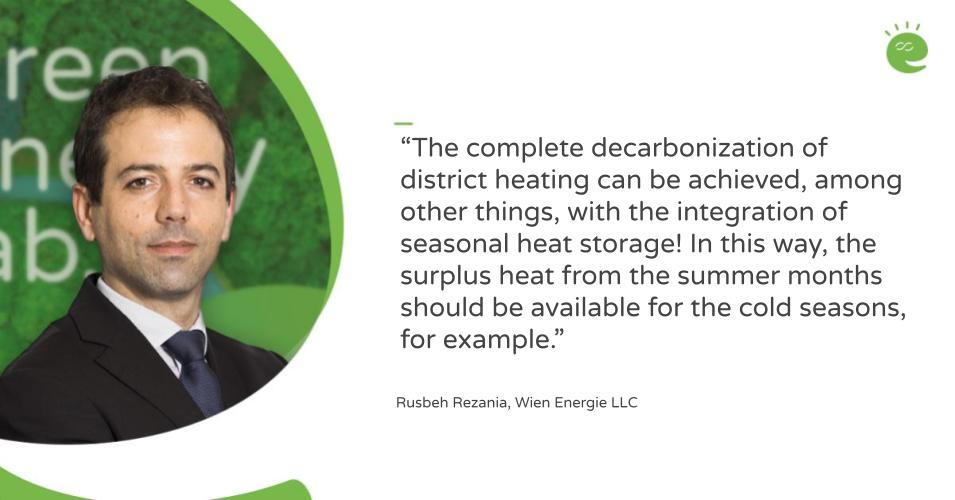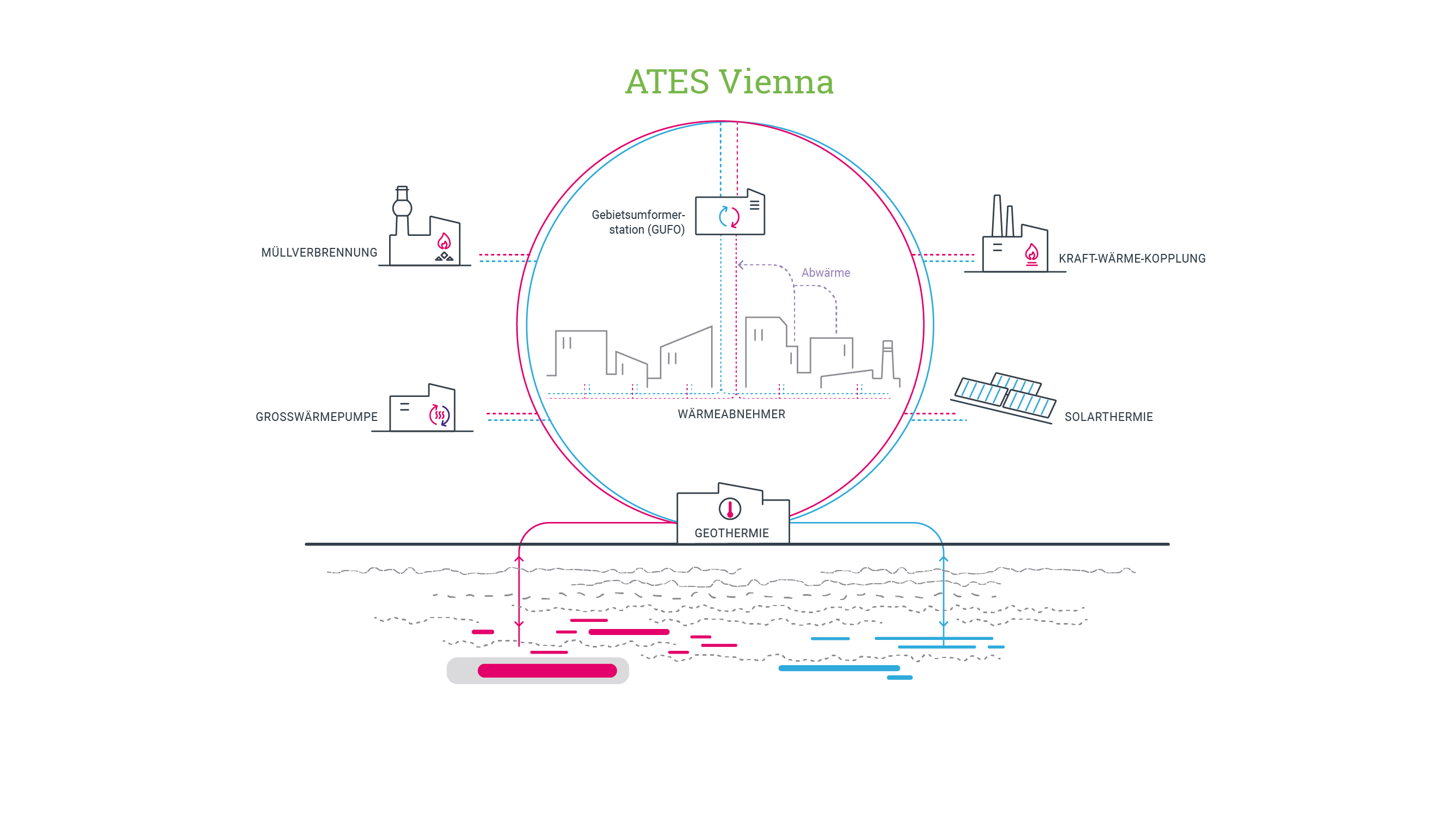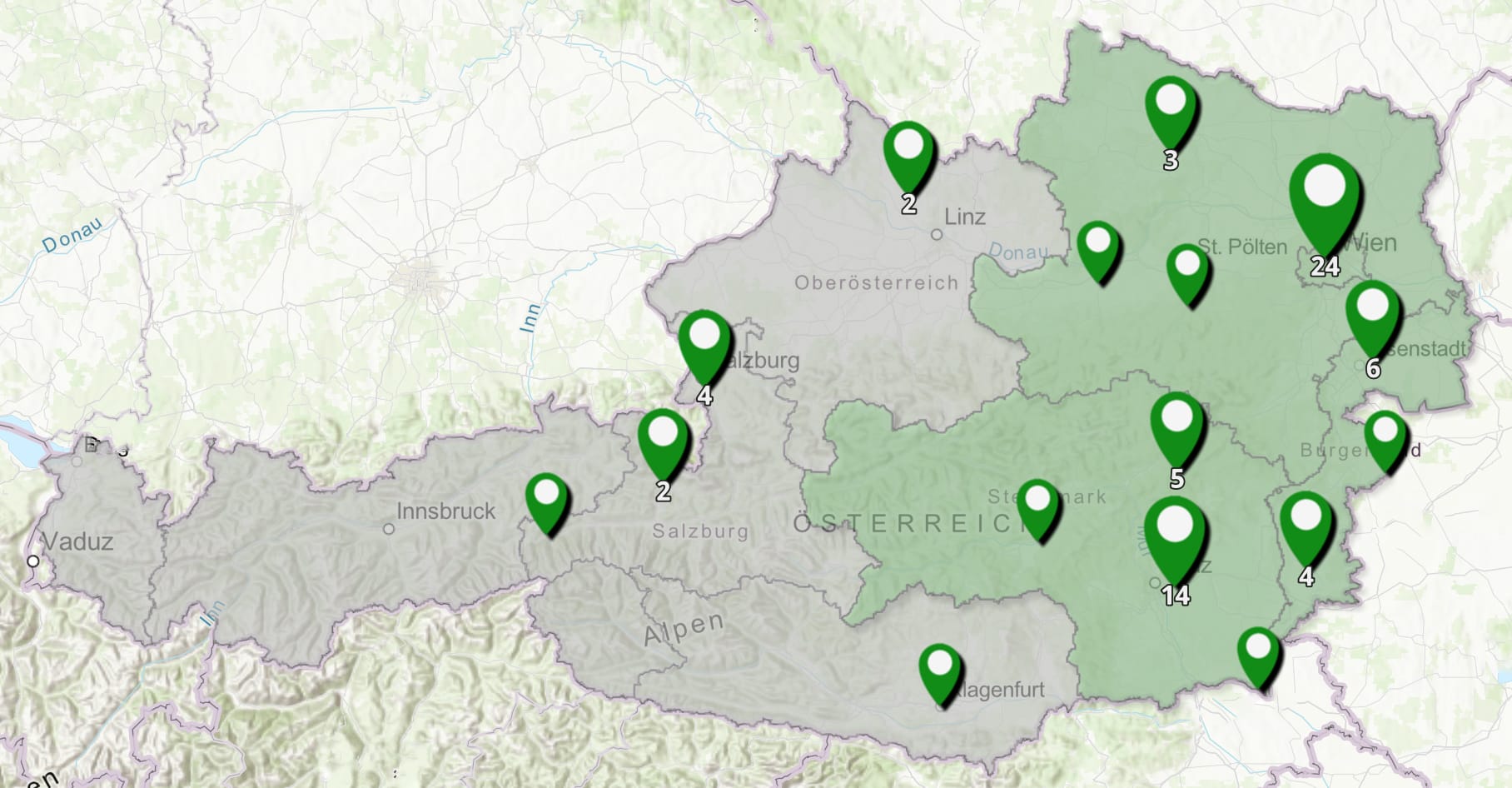ATES Vienna
Integrating aquifer thermal energy storage into district heating networks to achieve complete decarbonisation
Half of non-renewable energy consumption is Austria is attributable to the heating and cooling segment. Innovative ideas are needed if the required decarbonisation of the heating sector is to be successful. Efficiently operated district heating networks with integrated energy resources play a key role in minimising the global rise in temperatures. The integration of seasonal thermal energy storage facilities is necessary for the complete decarbonisation of district heating systems. From a technological point of view, one option here is high-temperature aquifer thermal energy storage (HT-ATES). The HT-ATES technology is based on the use of thermal water reservoirs at depths of between 300 and 3,000 metres which are unsuitable for use as drinking water. This entails drilling at least two boreholes to access local, mostly isolated, thermal water reservoirs. With the aid of these boreholes, heat loads are transferred to and extracted in heat exchangers on the surface. This process usually involves a return flow in the borehole pipes. This takes some time and therefore makes the HT-ATES technology more interesting for long-term seasonal storage.
The biggest advantage of this technology is that it requires very little space on the surface, which is why it is particularly suited to urban areas. So far, however, the ATES technology had not become technologically or commercially established either in Austria or in many other EU countries.
Integrating aquifer thermal energy storage into district heating networks to achieve complete decarbonisation
Particularly in urban areas, where little space is available on the surface, this storage solution is especially suited due to its limited space requirements. Besides certain geological prerequisites, energy sources and corresponding demand for heat in the vicinity are also needed. A district heating network or industrial heating demand are ideal consumers. While there are already several isolated applications of aquifer thermal energy storage at the international level, this project played a pioneering role at the national level. The aim was to design the first technical pilot plant in Austria. The project outcomes were leveraged to define the future path of renewable heating supplies in urban areas.
Potential for the energy transition
Sector coupling, i.e. the technical and commercial integration of the power, heat and transport sectors, is key to the energy transition. Storage technologies, such as the ATES Vienna project, are an important part of this. They make it possible to seasonally store energy, for example, from waste heat sources or excess energy. Through the leveraging of synergies with other projects in the model region over the course of the project, the intention was to develop a guideline for tapping and exploiting the potential of this technology for energy suppliers and district heating network operators.
The following model solutions were being developed in the ATES Vienna project:
AQUIFER DEEP HEAT STORAGE
Media reports on the project
Potential of geothermal energy for the energy transition
Does geothermal energy in Austria have the potential to become a key energy source for the heating transition? The Green Energy Lab dedicated a special Insight Talk to this question on April 23, 2024. Here you can find the report and a video of the event.
To the articleGeothermal energy: The slumbering giant in the depths
There are kilometers of hot water in the ground that could be used for district heating and power generation - even in Austria. This article on Futurezone.at impressively highlights the potential and activities for harnessing geothermal energy for power generation.
To the article



